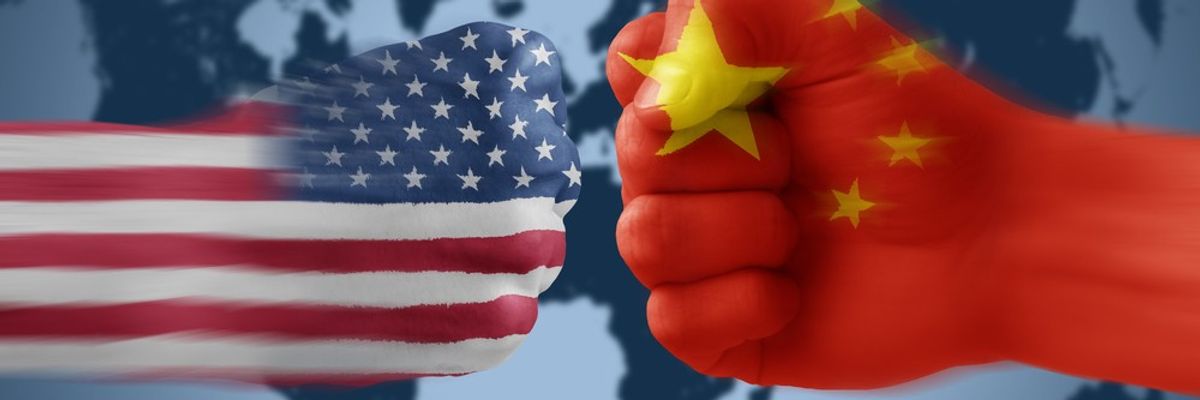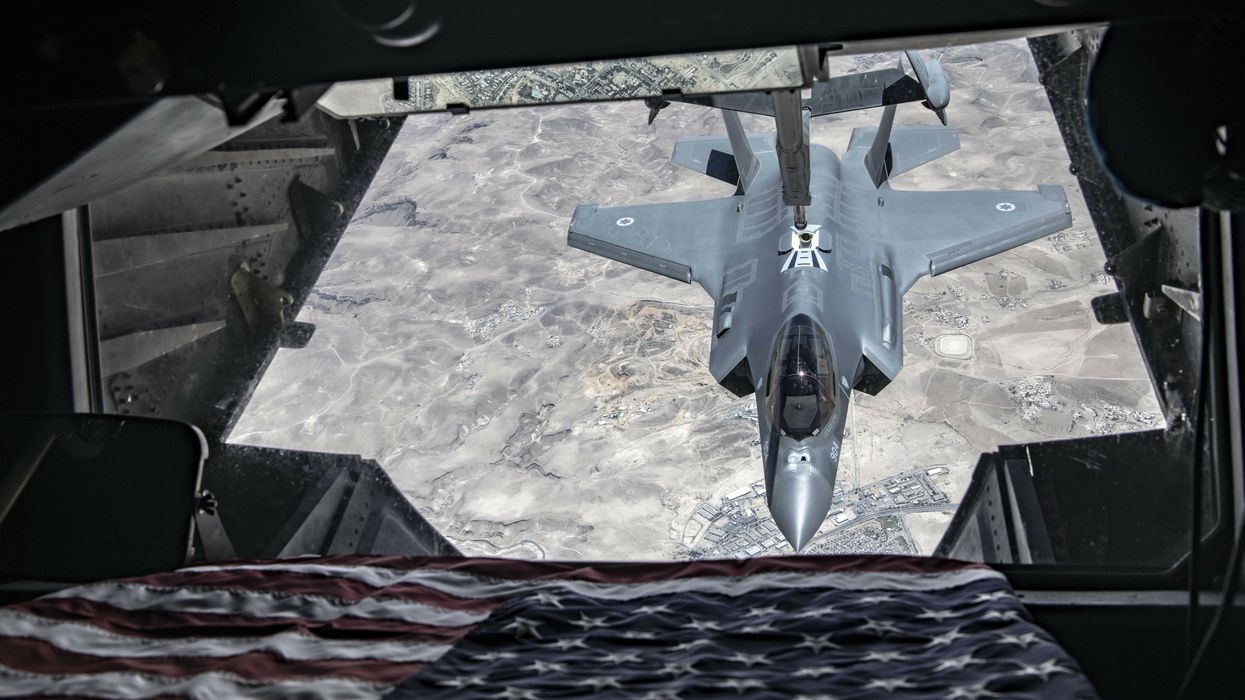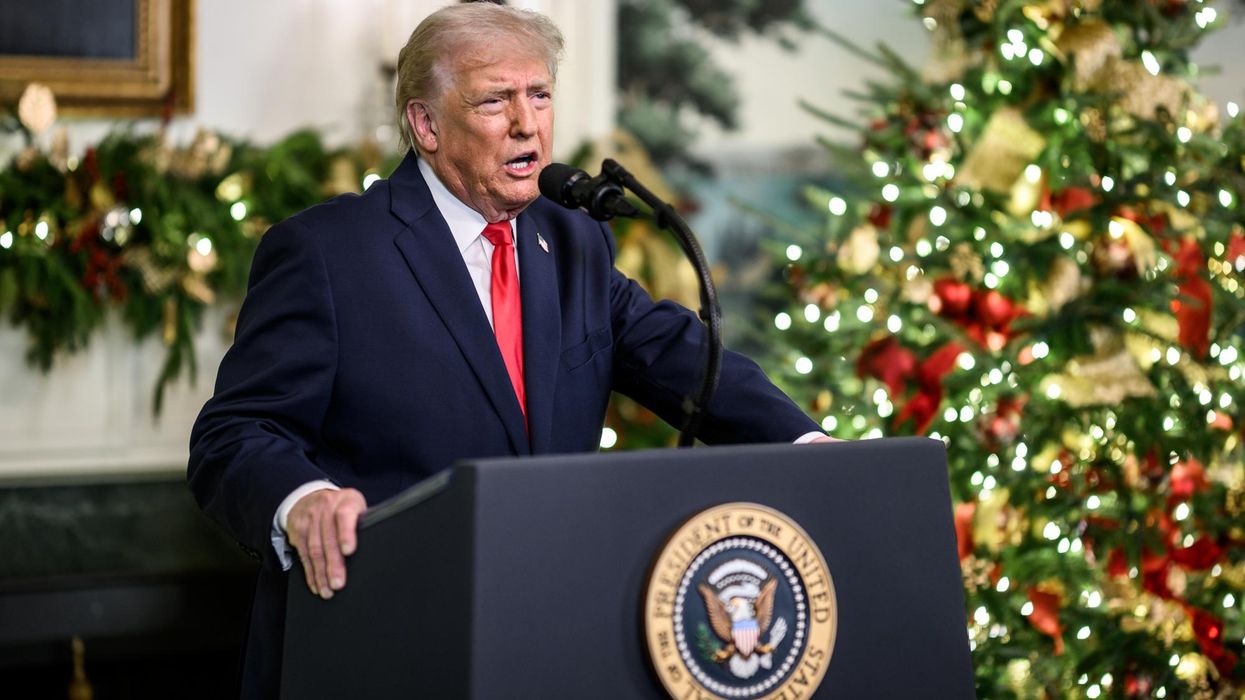In his opening speech to the Chinese Communist Party’s 20th Party Congress, General Secretary Xi Jinping refused to rule out the use of force against Taiwan. But the Chinese people need not worry. Announced Xi: “We have carried out bold reforms of national defense and the armed forces, restructuring the military leadership and command systems, the modern armed forces system, and the military policy system.”
Xi emerged from the party convocation this weekend as the strongest Chinese leader since Mao Zedong, observers say, with every rival expunged from his tight circle in the Politburo Standing Committee.
"From the looks of it, Xi is free to do anything he wants. It means he no longer faces any resistance or checks and balance in the PSC. All future policies will be carried out according to his will," said one East Asian scholar interview by Reuters on Sunday.
For sure, the People’s Liberation Army budget has been rising steadily, but the PLA — which includes all forces — remains largely untested. Nevertheless, Washington’s objective should be to keep the PLA untested. War between America and China would be a catastrophe that must be avoided.
Achieving and maintaining a liberal society sometimes requires war. However, war is the single most destructive human activity with a long record of undermining and ultimately destroying liberal societies. Both World War I and World War II unleashed and/or spread authoritarian and totalitarian forces around the world.
Beijing’s rise increasingly has led to fears and predictions of conflict. The broad range of philosophical and economic controversies are unlikely to lead to war. The struggle over territory is much more dangerous. The U.S. has security treaties with Tokyo and Manila, which Washington officials have stated cover contested islands. Whether any particular administration would respond militarily to a shoot-out over the Senkaku/Diaoyu Islands or Scarborough Shoal/Huangyan Island, however, remains uncertain.
Most dangerous is Taiwan, over which Washington retains a policy of “strategic ambiguity,” meaning a formal refusal to commit to the island’s defense. However, sentiment among the U.S. foreign policy establishment, indecorously nicknamed “the Blob,” appears to run strongly in favor of backing Taiwan militarily. The main disagreement in Washington today is over whether to move to “strategic clarity,” not to eschew military involvement. Indeed, President Joe Biden has four times stated that his administration would defend the island state; his aides’ attempt to walk back his comments fooled no one, least of all the Chinese.
The hope — and casual assumption of many American policymakers — is that repeated threats will deter the Chinese from attacking. However, the geopolitics favors Beijing. These territorial issues matter much more to the PRC. They are geographically close to China but thousands of miles from the US and involve nationalistic and emotional issues that appeal to the Chinese people as well as leaders. Although the PRC has no interest in committing national suicide, it is likely to take an aggressive approach, spending and risking more to achieve its ends.
The U.S. military is seeking to bolster deterrence by developing remedies for Chinese advantages, including asymmetric tactics. For instance, the U.S. and allied naval forces could use anti-access/area denial tactics against Chinese warships and interdict Chinese shipping. Washington would pressure on allied powers to provide additional bases, materiel, and forces on station in the region.
However, despite tougher rhetoric from America’s Asian allies, none has committed to military action, which would make them targets of Chinese military attack as a result. Many European states have taken an increasingly negative attitude toward China, but their involvement in a Pacific war still seems unlikely; even France and Great Britain, which possess Europe’s most substantial military forces, are ill-equipped to play a significant role in a Pacific conflict.
However, Washington would call on its allies to impose economic sanctions, cooperate in cyberwarfare, apply diplomatic pressure, and offer logistical support.
A war involving the U.S. and China could not easily be contained. Warned the Brookings Institution’s Michael O’Hanlon: “Neither Beijing nor Washington would accept defeat in a limited engagement. Instead, the conflict probably would expand horizontally to other regions and vertically, perhaps even to include nuclear weapons threats — or their actual use. It literally could become the worst catastrophe in the history of warfare.”
Also offering a sober judgment were Michael Beckley and Hal Brands, both with the American Enterprise Institute:
“If conflict does break out, U.S. officials should not be sanguine about how it would end. Tamping or reversing Chinese aggression in the Western Pacific could require a massive use of force. An authoritarian CCP, always mindful of its precarious domestic legitimacy, would not want to concede defeat even if it failed to achieve its initial objectives. And historically, modern wars between great powers have more typically gone long than stayed short. All of this implies that a U.S.-China war could be incredibly dangerous, offering few plausible off-ramps and severe pressures for escalation.”
The consequences of such a conflict would spread globally, with much greater impact than the Russo-Ukraine war. Imagine Taiwanese industry devastated from combat or conquest. Allied sanctions against Beijing and its trading partners. Nations big and small pushed to choose sides. Both the U.S. and China interrupting if not sweeping the other nations’ trade from the seas.
At the end, defeat for the U.S. and its allies would be possible if not likely. In recent years U.S. wargames have generally shown Beijing as the victor. The best case, after a fashion, appears to be an indecisive and thus lengthy war. Concluded one analysis: “The overarching takeaway from participants in the war game: If China invades Taiwan, the Indo-Pacific region will plunge into a broad, drawn-out war that could include direct attacks on the U.S., including Hawaii and potentially the continental United States.”
The Pentagon is seeking solutions, but projecting power will always remain more expensive than deterring the use of power.
Moreover, this would be the first major conventional war between nuclear-armed powers. Both governments might find it difficult to eschew a resort to WMDs in such a conflict. Indeed, the very nature of the battleground would risk escalation. Chinese use of mainland bases would force the U.S. to target them. And the PRC’s targets would at least be U.S. possessions and bases in the Asia-Pacific, ensuring civilian death and destruction. Both Beijing and Washington would feel pressure to escalate, which would have no obvious stopping point.
Indeed, the greatest danger might be backing into a nuclear war. No Chinese government could afford to lose, leaving Washington dominant along its border. An American loss would destroy U.S. credibility as global guarantor of other nations’ security. Both governments could come to believe that avoiding defeat was worth almost any sacrifice and cost.
Finally, even an American/allied victory, whatever that looked like, would likely be only temporary. The losing Chinese ruler might fall, but the Chinese people would not likely accept such a result. Rather, geography, nationalism, and interest would impel a defeated PRC, like defeated Germany after World War I, to reorganize and rearm for a future rematch. Yet the U.S., facing its own aging population and debt tsunami, would be reluctant to spend hundreds of billions annually to guarantee not America’s safety, but perpetually police Asia thousands of miles away.
No one should view military action as inevitable. No outcome is foregone. Policy matters. Nor should liberal nations see war with China as a solution. Rather, war would reflect failure, disastrous and tragic failure. That makes it something to be avoided absent the direst necessity. Americans must seek to preclude the worst even as they plan for the worst.
















